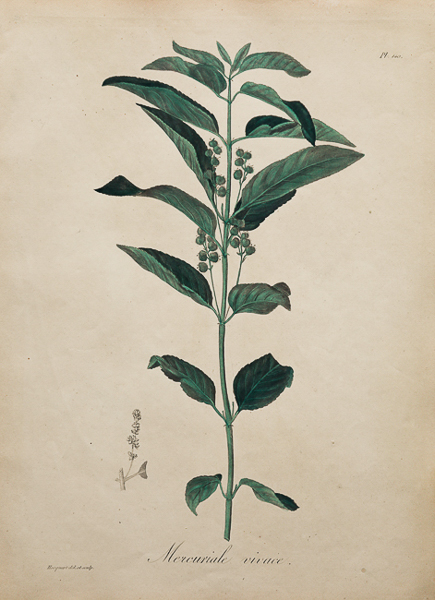|
| NEW ARRIVALS | FURNITURE | LIGHTING | TAPESTRIES | PAINTINGS | PRINTS | CERAMICS | OBJETS D'ART |
| RETURN TO BOTANICALS |
FLOWER PRINTS FROM THE PHYTOGRAPHIE MEDICALE
('Medical phytography, a history of powerful substances and poisons from the plant kingdom') by Joseph Roques. (1772-1850).
Engraved by Édouard Auguste Patrice Hocquart (1789–1870).
Fine colour stipple engravings finished by hand.
Published c. 1821
Paper Size 31 cm x 23 cm
Priced individually.
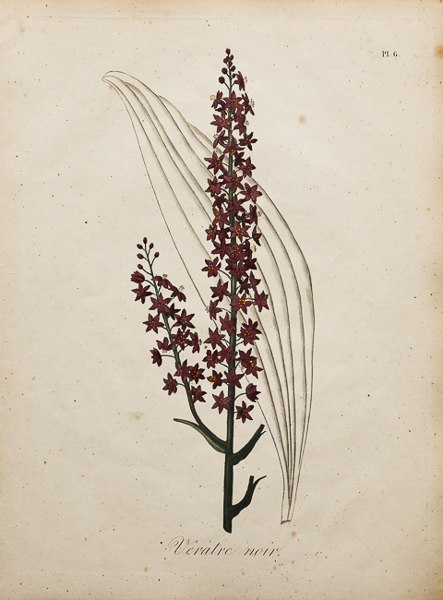 |
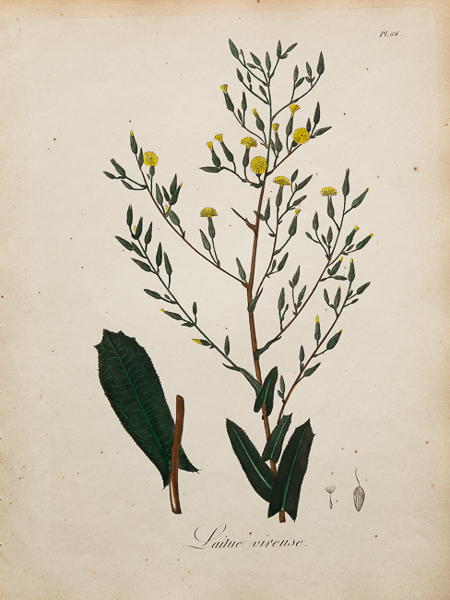 |
| REF: P907 Vératre noir Veratrum nigrum is a widespread Eurasian species of perennial flower of the family Melanthiaceae. Despite its common name, V. nigrum is not closely related to the true hellebores, nor does it resemble them. The plant was widely known even in ancient times. SOLD |
REF: P906 |
|
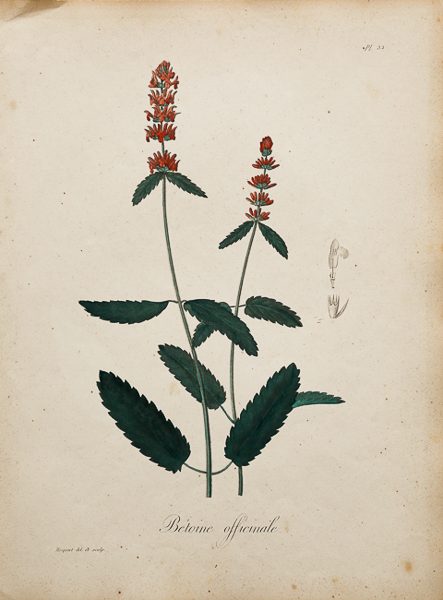 |
| REF: P909 Mercuriale vivace Mercurialis perennis, commonly known as dog's mercury. SOLD |
REF: P911 Bétoine officinale Betonica officinalis, commonly known as common hedgenettle. SOLD |
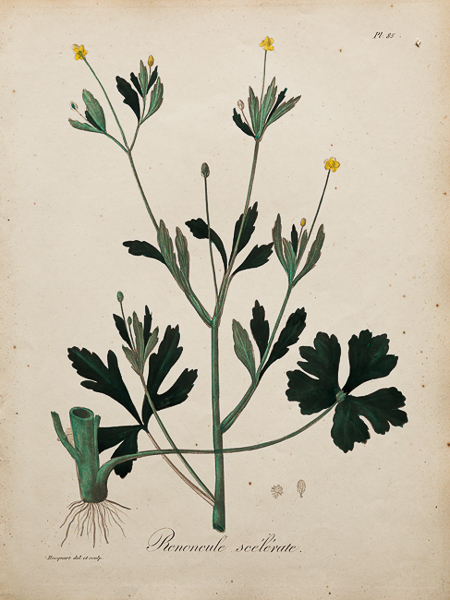 |
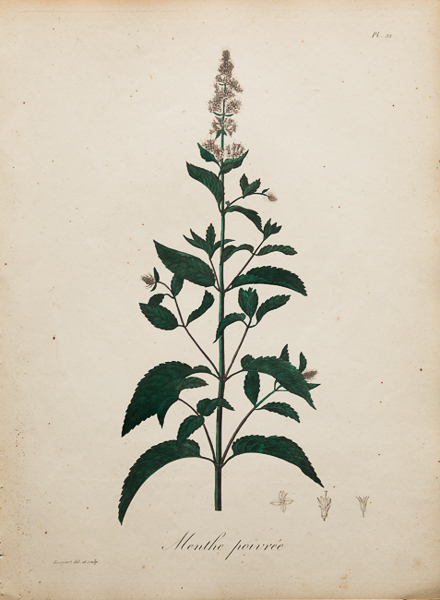 |
| REF: P912 Renoncule scélérate Ranunculus sceleratus known by the common names celery-leaved buttercup, celery-leaf buttercup, and cursed buttercup is a species of flowering plant in the buttercup family Ranunculaceae. SOLD |
REF: P914 Menthe poivrée Peppermint is a hybrid mint, a cross between watermint and spearmint. Indigenous to Europe and the Middle East, the plant is now widely spread and cultivated in many regions of the world. It is occasionally found in the wild with its parent species. SOLD |
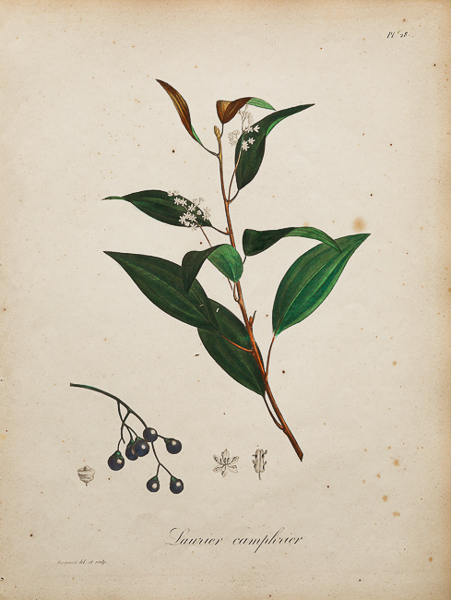 |
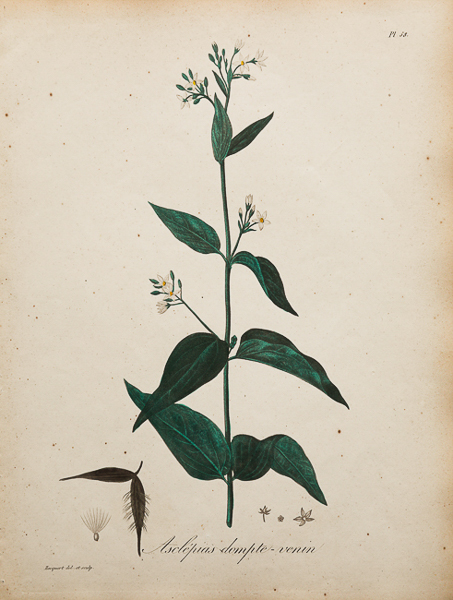 |
| REF: P915 Laurier camphrier Cinnamomum camphora is a species of evergreen tree that is commonly known under the names camphor tree, camphorwood or camphor laurel. SOLD |
REF: P916 Asclépias dompte-venin Vincetoxicum hirundinaria, commonly named white swallow-wort, is a long-lived herbaceous perennial of the genus Vincetoxicum in the family Apocynaceae. SOLD |
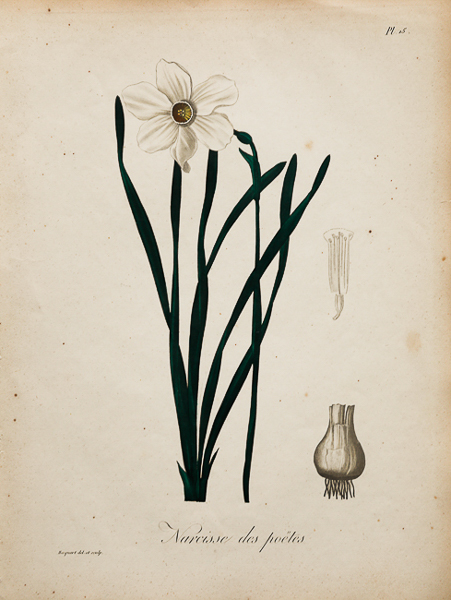 |
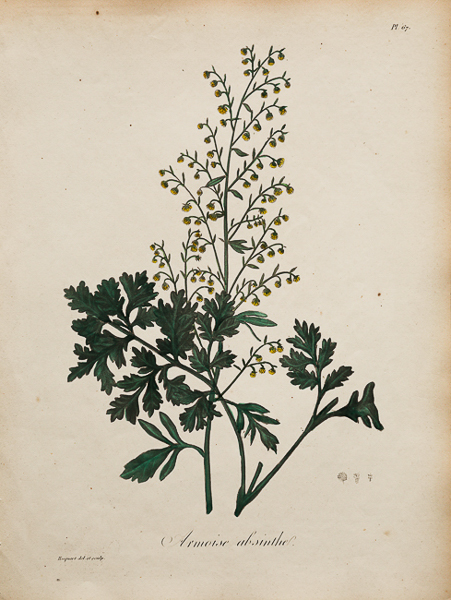 |
| REF: P919 Narcisse des poëtes Narcissus poeticus was one of the first daffodils to be cultivated, and is frequently identified as the narcissus of ancient times. It is also often associated with the Greek legend of Narcissus. It is the type species of the genus Narcissus and is widely naturalized in North America. SOLD |
REF: P920 Armoise absinthe Common wormwood Artemisia absinthium is a species of Artemisia native to temperate regions of Eurasia and Northern Africa and widely naturalized in Canada and the northern United States. It is grown as an ornamental plant and is used as an ingredient in the spirit absinthe as well as some other alcoholic beverages. SOLD |
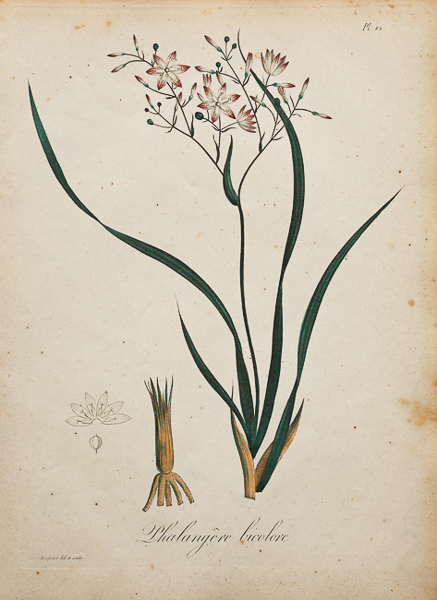 |
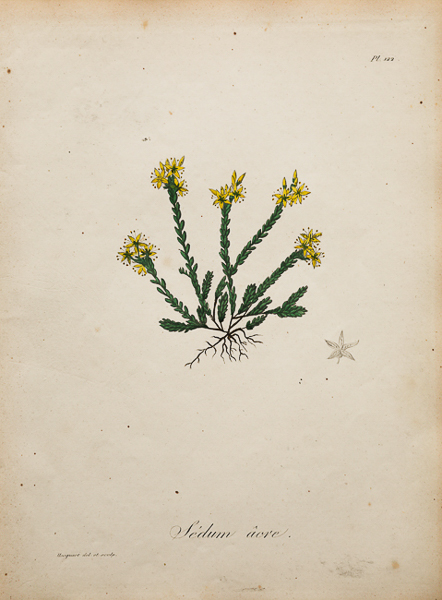 |
| REF: P921 Phalangére bicolore SOLD |
REF: P922 Sédum âcre Goldmoss stonecrop (Orpin âcre) Sedum acre, commonly known as the goldmoss stonecrop, mossy stonecrop, goldmoss sedum, biting stonecrop and wallpepper, is a perennial flowering plant in the family Crassulaceae. It is native to Europe, but also naturalised in North America, Japan and New Zealand. SOLD |
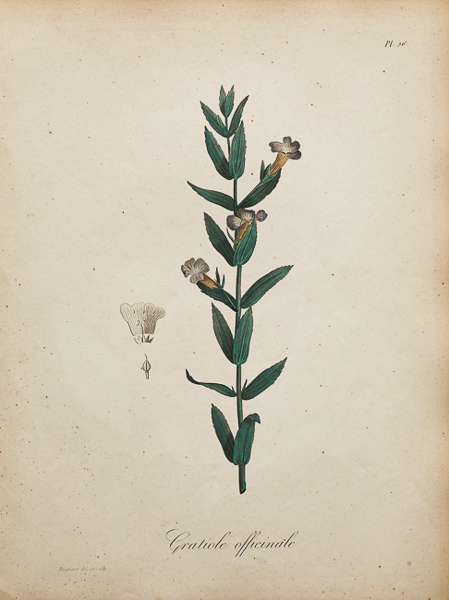 |
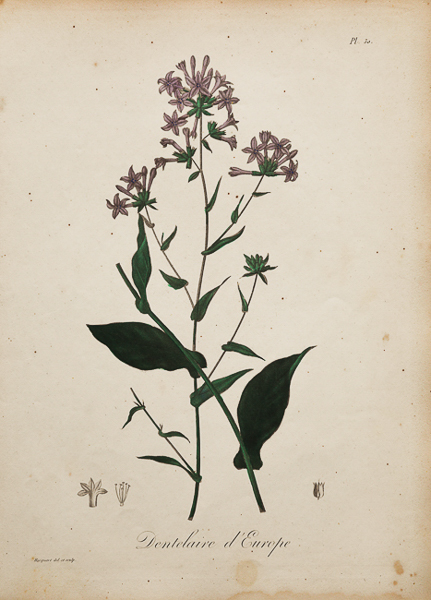 |
| REF: P923 Gratiole officinale Gratiola officinalis, the gratiole, common hedgehyssop, grace of God, Gratia Dei, hedge hyssop, hedge-hyssop, or herb of grace, is an ornamental plant in the family Plantaginaceae. It is a rhizomatous perennial herb native to Europe. £65.00 + VAT |
REF: P924 Dentelaire d’Europe European lace SOLD |
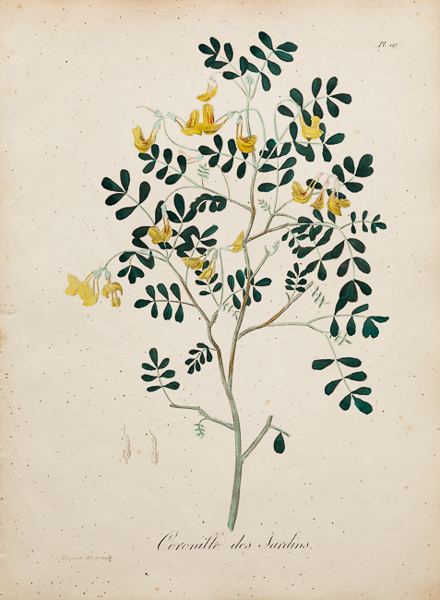 |
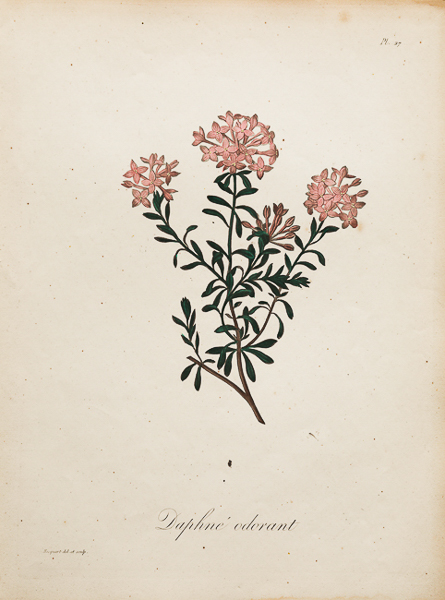 |
| REF: P925 Coronille des Jardins Hippocrepis emerus, the scorpion senna, is a species of perennial plant belonging to the genus Hippocrepis in the family Fabaceae. SOLD |
REF: P926 Daphné odorant Fragrant daphne SOLD |
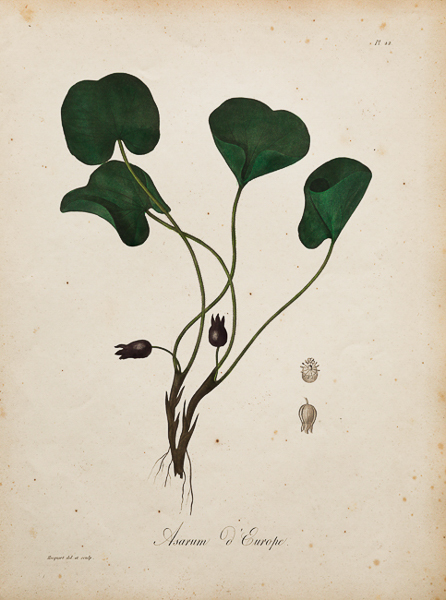 |
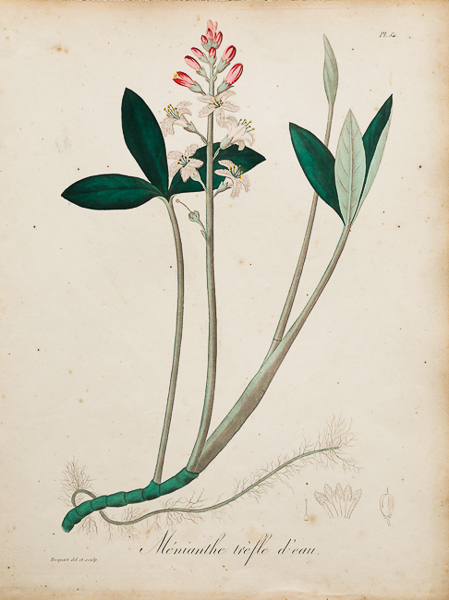 |
| REF: P927 Asarum d’Europe Asarum europaeum, commonly known as asarabacca, European wild ginger, hazelwort, and wild spikenard, is a species of flowering plant in the birthwort family Aristolochiaceae, native to large parts of temperate Europe, and also cultivated in gardens . SOLD |
REF: P928 Ménianthe tréfle d’eau BOGBEAN / MENYANTHES TRIFOLIATA SOLD |
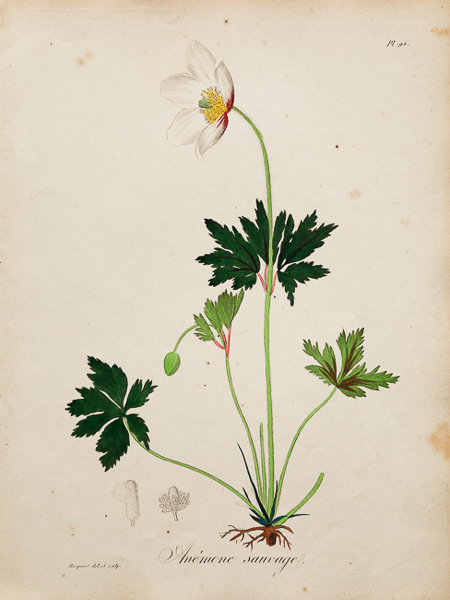 |
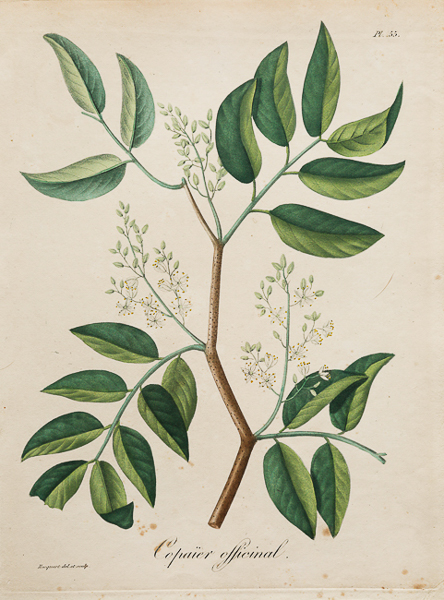 |
| REF: P929 Anémone sauvage Snowdrop anemone Anemone sylvestris is a perennial plant flowering in spring, native to meadows and dry deciduous woodlands of central and western Europe. It spreads rapidly by root suckers and stolons. Another name is wood anemone, but this more commonly refers to the European A. nemorosa or the North American A. quinquefolia. SOLD |
REF: P931 Copaïer officinal SOLD |
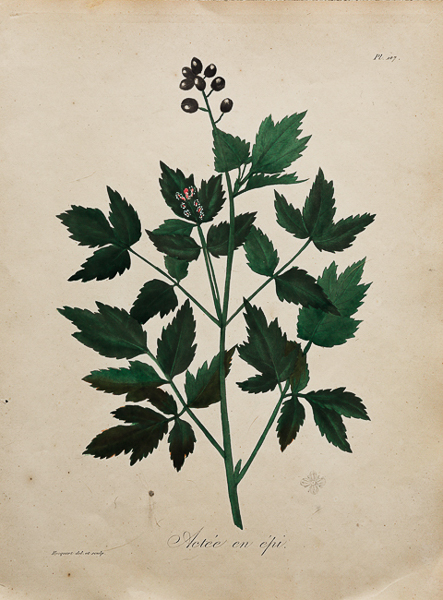 |
 |
| REF: P932 Actéeen épi Actaea spicata, the baneberry, Eurasian baneberry, or herb Christopher, is a species of flowering plant in the genus Actaea, native to Eastern Europe and western Asia. It is a herbaceous perennial plant growing 30–60 cm tall. It has toothed, bipinnate compound leaves up to 40 cm long and 30 cm broad. £70.00 + VAT |
REF: P934 Euophorbe réveil-matin Euphorbia helioscopia, the sun spurge, is a species of flowering plant in the spurge family Euphorbiaceae. It is a herbaceous annual plant, native to most of Europe, northern Africa, and eastward through most of Asia. Folk names include wart spurge, umbrella milkweed and madwoman's milk. SOLD |
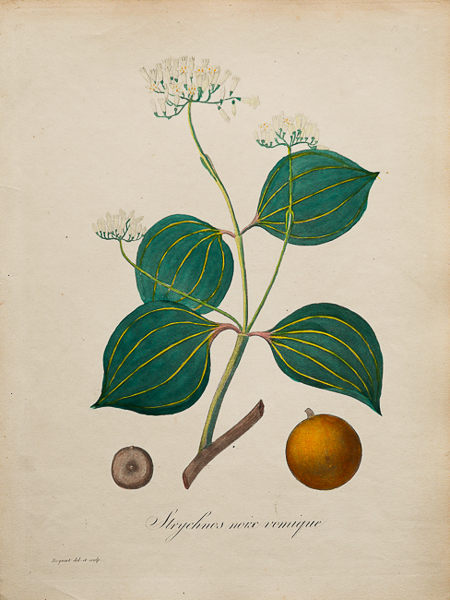 |
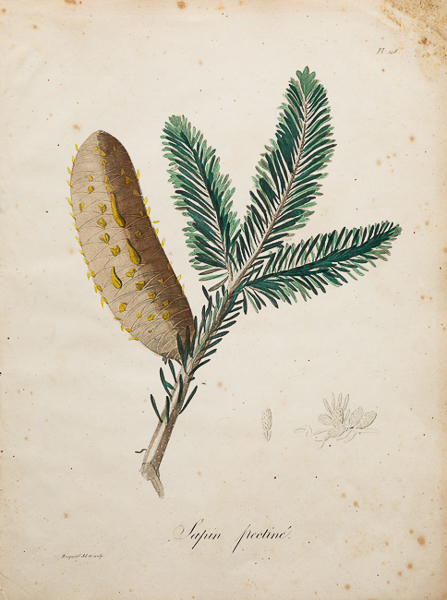 |
| REF: P935 Strychnos noix vomique Strychnos nux-vomica, the strychnine tree, also known as nux vomica, poison nut, semen strychnos, and quaker buttons, is a deciduous tree native to India and to southeast Asia. It is a medium-sized tree in the family Loganiaceae that grows in open habitats. Its leaves are ovate and 2–3.5 inches in size. SOLD |
REF: P936 Sapin pectiné Abies alba, the European silver fir or silver fir, is a fir native to the mountains of Europe, from the Pyrenees north to Normandy, east to the Alps and the Carpathians, Slovenia, Croatia, Bosnia. £70.00 + VAT |
 |
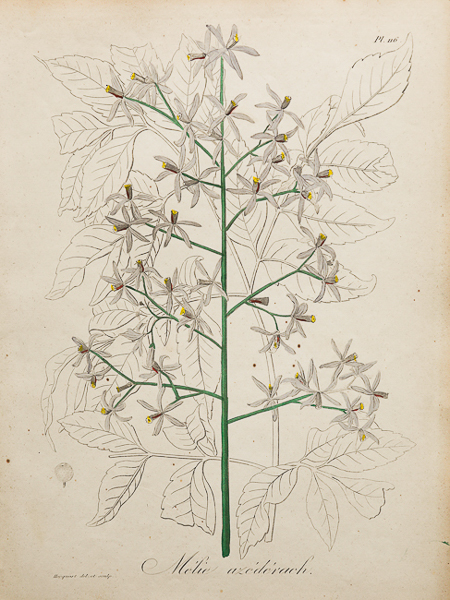 |
| REF: P937 Vératre blanc Veratrum album is a poisonous plant of the family Liliaceae or Melanthiaceae. It is native to Europe and parts of western Asia. £60.00 + VAT |
REF: P938 Mélie azédérach £60.00 + VAT |
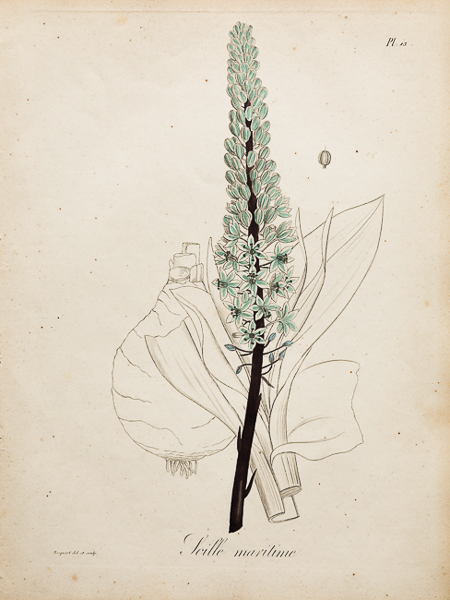 |
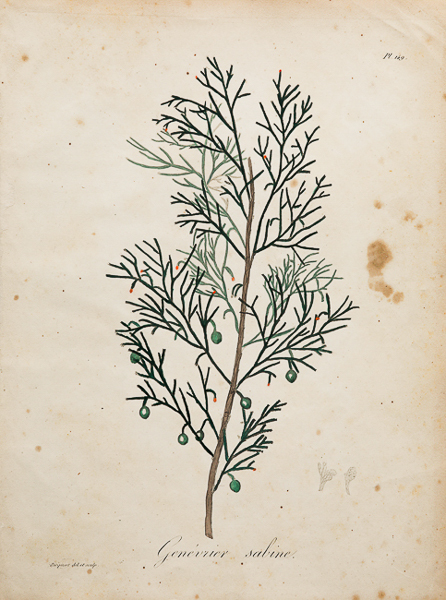 |
| REF: P939 Scille maritime Drimia maritima is a species of flowering plant in the family Asparagaceae, subfamily Scilloideae. This species is known by several common names, including squill, sea squill, sea onion, and maritime squill. It may also be called red squill, particularly a form which produces red-tinged flowers instead of white. £60.00 + VAT |
REF: P940 Genévrier sabine Juniperus sabina, the savin juniper or savin, is a species of juniper native to the mountains of central and southern Europe and western and central Asia, from Spain to eastern Siberia. £60.00 + VAT |
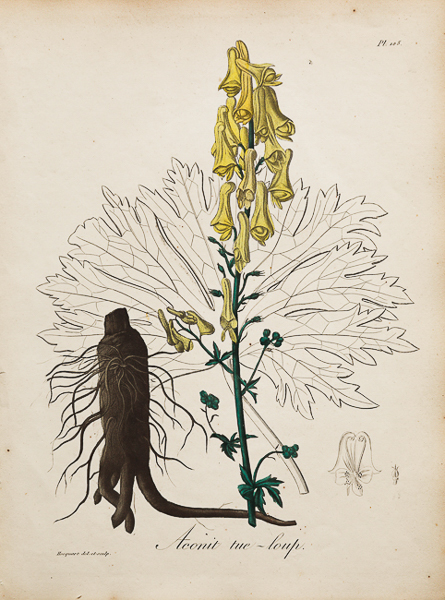 |
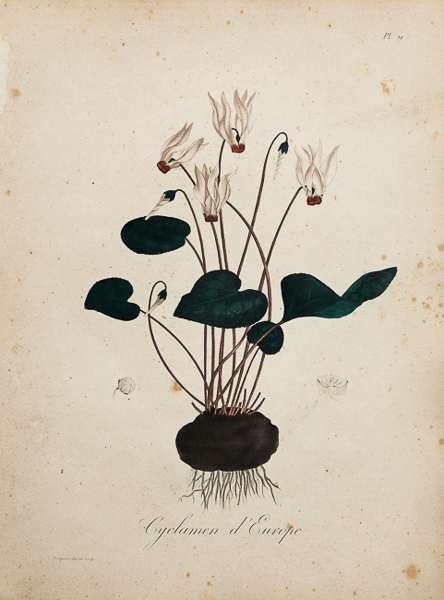 |
| REF: P941 Aconit tue-loup Wolfsbane Scientific name: Aconitum lycoctonum subsp. vulparia. £60.00 + VAT |
REF: P942 Cyclamen d’Europe Cyclamen purpurascens is a species of flowering plant in the genus Cyclamen of the family Primulaceae, native to central Europe, northern Italy, and Slovenia. It is a tuberous perennial with variegated leaves, and deep pink flowers in summer. SOLD |
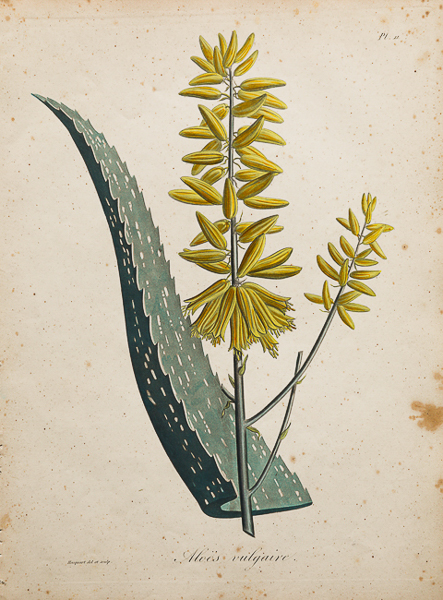 |
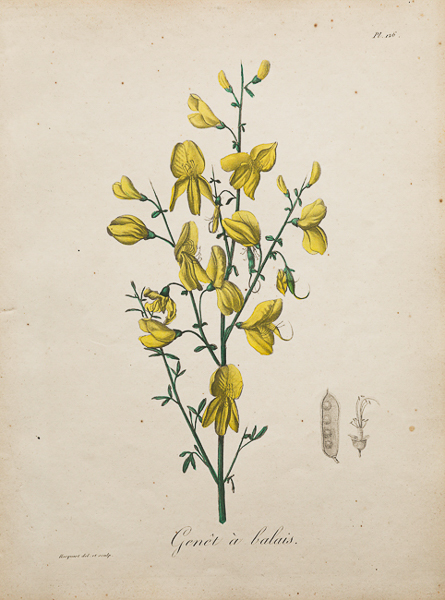 |
| REF: P943 Aloës vulgaire aloe vera SOLD |
REF: P944 Genêt à balais Scotch broom Cytisus scoparius, the common broom or Scotch broom, syn. Sarothamnus scoparius, is a perennial leguminous shrub native to western and central Europe. SOLD |
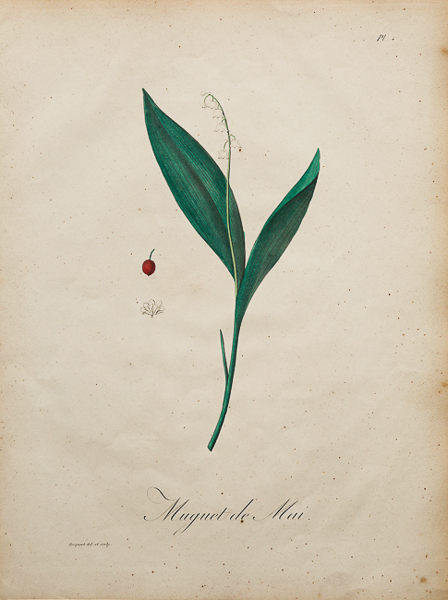 |
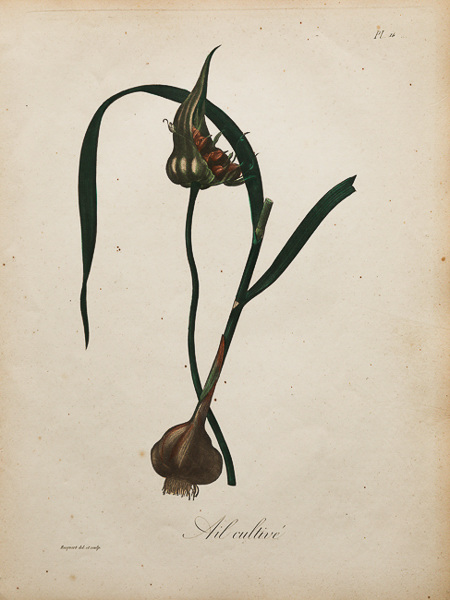 |
| REF: P946 Muguet de Mai Lily of the valley, Convallaria majalis, sometimes written lily-of-the-valley, is a highly poisonous woodland flowering plant with sweetly scented, pendent, bell-shaped white flowers borne in sprays in spring. It is native throughout the cool temperate Northern Hemisphere in Asia and Europe. £70.00 + VAT |
REF: P947 Ail cultivé GARLIC £70.00 + VAT |
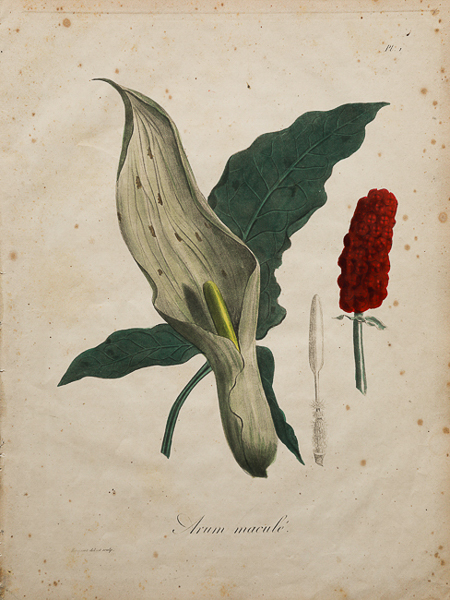 |
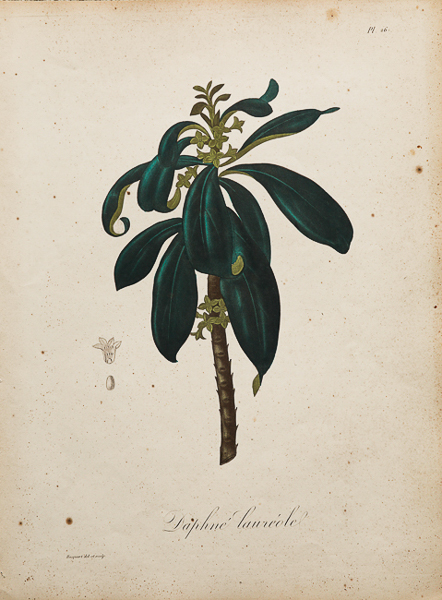 |
| REF: P948 Arum maculé Arum maculatum is a common woodland plant species of the family Araceae. It is widespread across most of Europe, as well as Turkey and the Caucasus.It is known by an abundance of common names including snakeshead, adder's root, arum, wild arum, arum lily, lords-and-ladies, devils and angels, cows and bulls, cuckoo-pint, soldiers diddies, priest's pintle, Adam and Eve, bobbins, naked girls, naked boys, starch-root, wake robin, f riar's cowl, sonsie-give-us-your-hand, jack in the pulpit and cheese and toast. £60.00 + VAT |
REF: P949 Daphné lauréole Spurge-laurel (Daphne laureola) Daphne laureola, commonly called spurge-laurel, is a shrub in the flowering plant family Thymelaeaceae. Despite the name, this woodland plant is neither a spurge nor a laurel. Its native range covers much of Europe and extends to Algeria, Morocco and the Azores. SOLD |
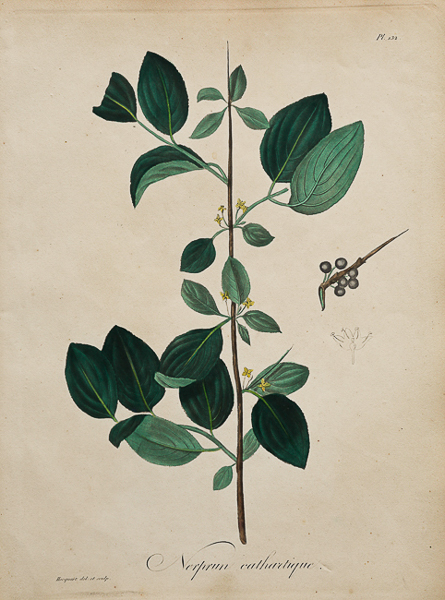 |
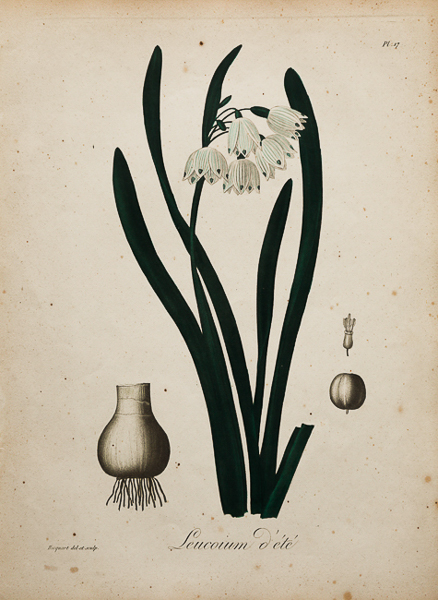 |
| REF: P951 Nerprun cathartique Rhamnus cathartica, the buckthorn, common buckthorn, or purging buckthorn, is a species of small tree in the flowering plant family Rhamnaceae. It is native to Europe, northwest Africa and western Asia, from the central British Isles south to Morocco, and east to Kyrgyzstan. SOLD |
REF: P953 Leucoium d’été Summer snowflake Leucojum aestivum, commonly called summer snowflake or Loddon lily, is a plant species widely cultivated as an ornamental. It is native to most of Europe from Spain and Ireland to Ukraine, with the exception of Scandinavia, Russia, Belarus and the Baltic Republics. £80.00 + VAT |
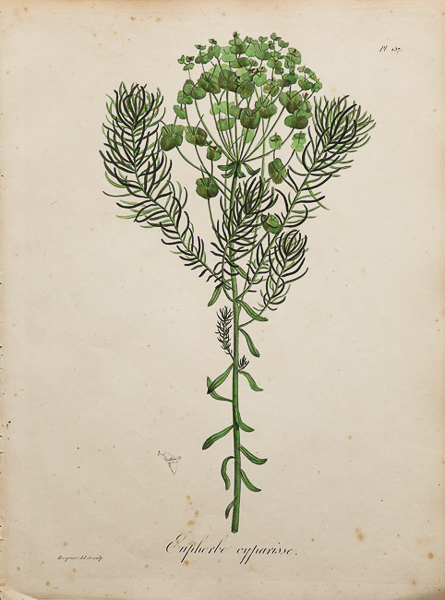 |
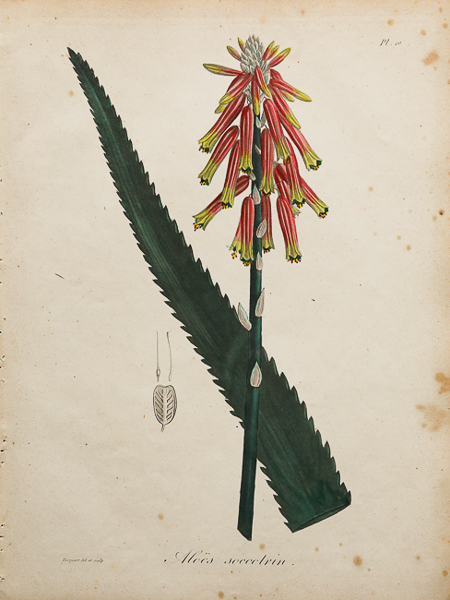 |
| REF: P955 Euphorbe cyparisse Cypress spurge Euphorbia cyparissias, the cypress spurge, is a species of plant in the genus Euphorbia. It is native to Europe and was introduced to North America in the 1860s as an ornamental plant. Natural habitat types include dunes, pannes, coastal headlands and grassland SOLD |
REF: P956 Aloës soccotrin SOLD |
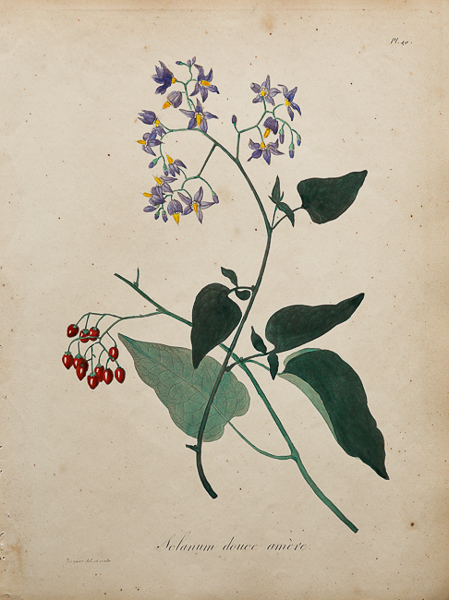 |
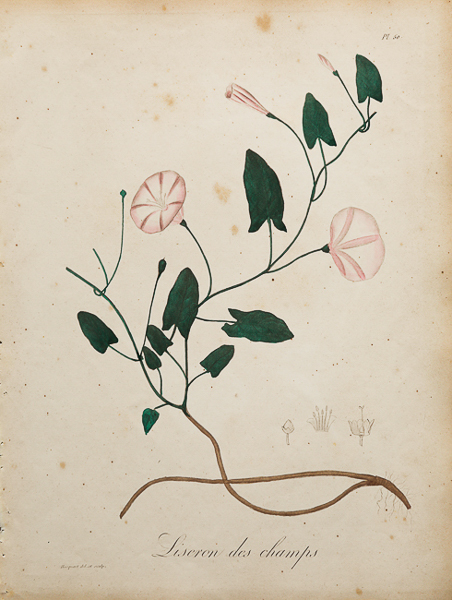 |
| REF: P957 Solanum douce amère Solanum dulcamara, also known as bittersweet, bittersweet nightshade, bitter nightshade, blue bindweed, Amara Dulcis,[3] climbing nightshade, fellenwort, felonwood, poisonberry, poisonflower, scarlet berry, snakeberry, trailing bittersweet, trailing nightshade, violet bloom, or woody nightshade, is a species of vine in the potato genus Solanum, family Solanaceae. It is native to Europe and Asia, and widely naturalised elsewhere, including North America, where it is an invasive problem weed. SOLD |
REF: P958 Liseron des champs Field bindweed (Liseron des champs) Convolvulus arvensis is a species of bindweed that is rhizomatous and is in the morning glory family, native to Europe and Asia. It is a climbing or creeping herbaceous perennial plant growing to 0.5–2 m high. | There are two varieties: Convolvulus arvensis var. arvensis. SOLD |
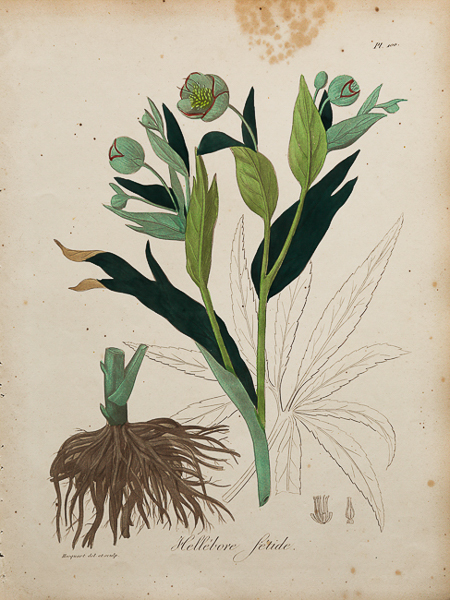 |
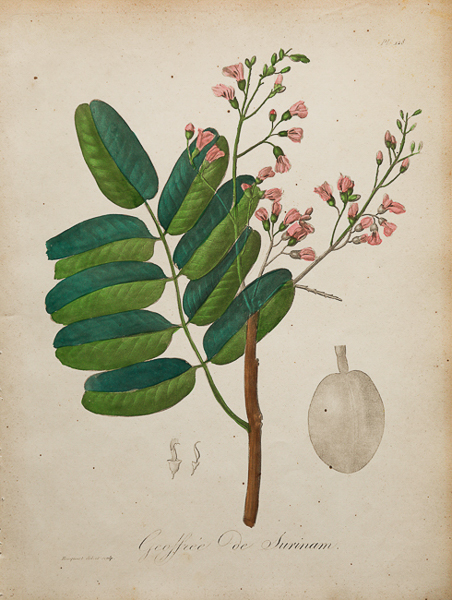 |
| REF: P959 Hellébore fétide Stinking hellebore Helleborus foetidus, known variously as stinking hellebore, dungwort, setterwort and bear's foot, is a species of flowering plant in the buttercup family Ranunculaceae, native to the mountainous regions of Central and Southern Europe, Greece and Asia Minor. SOLD |
REF: P960 Geoffrée de Surinam SOLD |
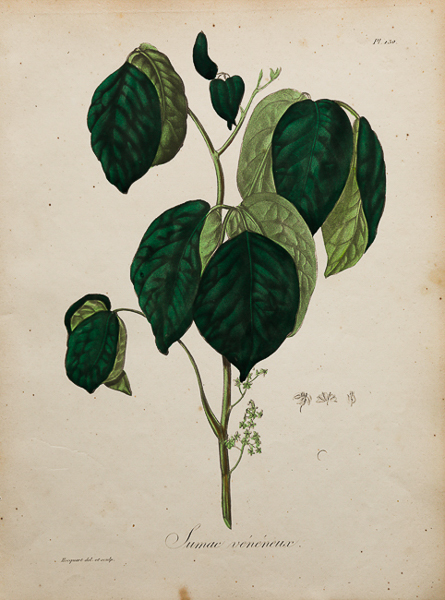 |
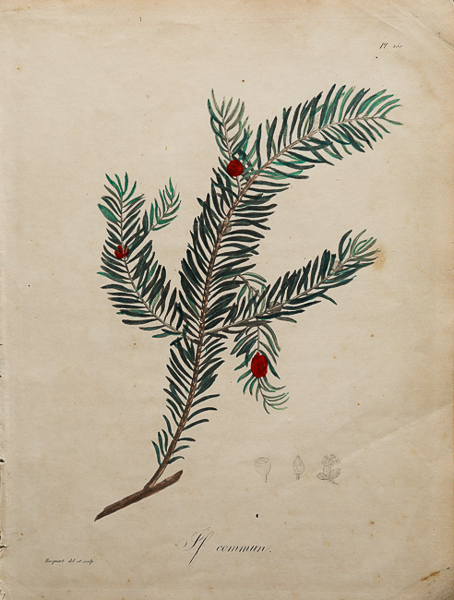 |
| REF: P961 Sumac vénéneux Poison ivy (Sumac grimpant) Toxicodendron radicans, commonly known as eastern poison ivy or poison ivy, is an allergenic Asian and Eastern North American flowering plant in the genus Toxicodendron. SOLD |
REF: P962 If commun Taxus baccata is a conifer native to western, central and southern Europe, northwest Africa, northern Iran and southwest Asia. It is the tree originally known as yew, though with other related trees becoming known, it may now be known as common yew, English yew, or European yew. £65.00 + VAT |
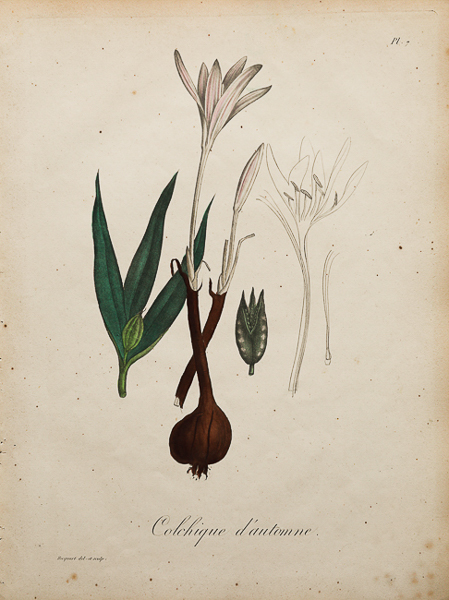 |
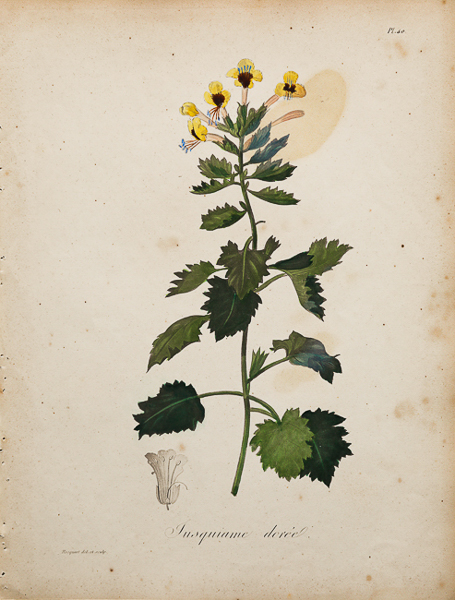 |
| REF: P963 Colchique d’automne Colchicum autumnale, commonly known as autumn crocus, meadow saffron or naked ladies, is a toxic autumn-blooming flowering plant that resembles the true crocuses, but is a member of the plant family Colchicaceae, unlike the true crocuses which belong to the family Iridaceae. £65.00 + VAT |
REF: P964 Tusquiame dorée SOLD |
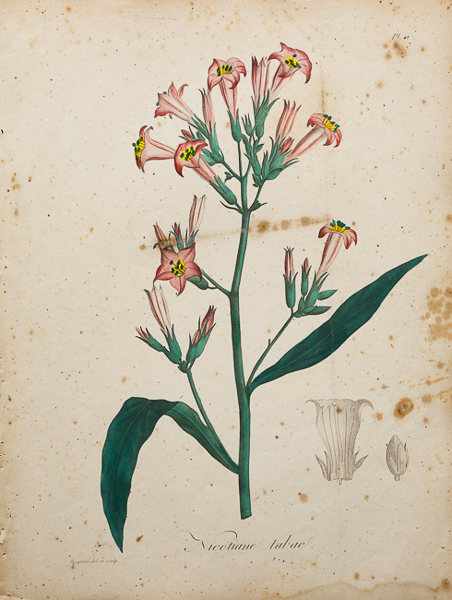 |
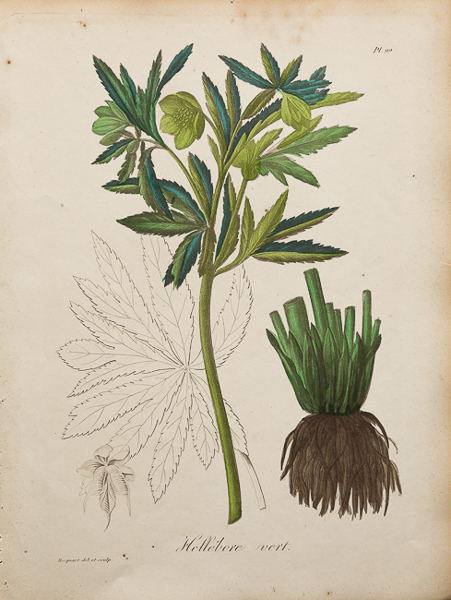 |
| REF: P965 Nicotiane tabac Nicotiana tabacum, or cultivated tobacco, is an annually-grown herbaceous plant. It is found in cultivation, where it is the most commonly grown of all plants in the genus Nicotiana, and its leaves are commercially grown in many countries to be processed into tobacco. SOLD |
REF: P967 Hellébore vert Helleborus viridis, commonly called green hellebore, is a perennial flowering plant in the buttercup family, Ranunculaceae, native to Central and Western Europe, including England. All parts of the plant are poisonous. £60.00 + VAT |
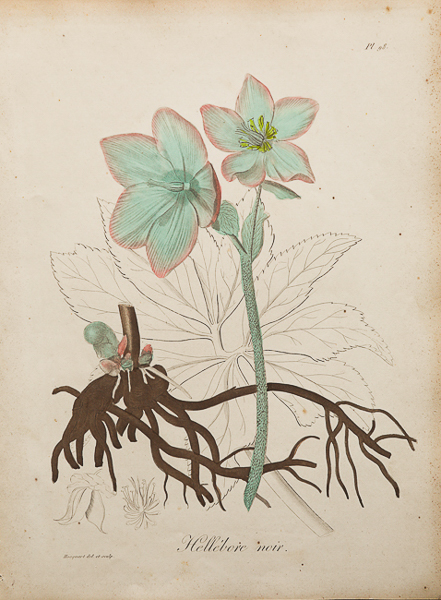 |
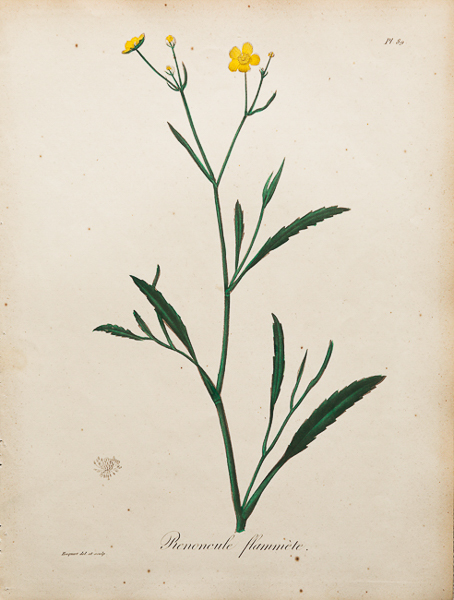 |
| REF: P968 Hellébore noir Helleborus niger, commonly called Christmas rose or black hellebore, is an evergreen perennial flowering plant in the buttercup family, Ranunculaceae. It is poisonous. Although the flowers resemble wild roses, Christmas rose does not belong to the rose family. SOLD |
REF: P969 Renoncule flammète Flaming buttercup £70.00 + VAT |
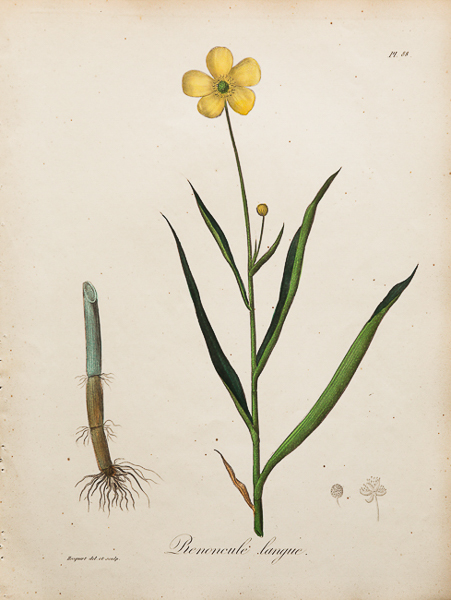 |
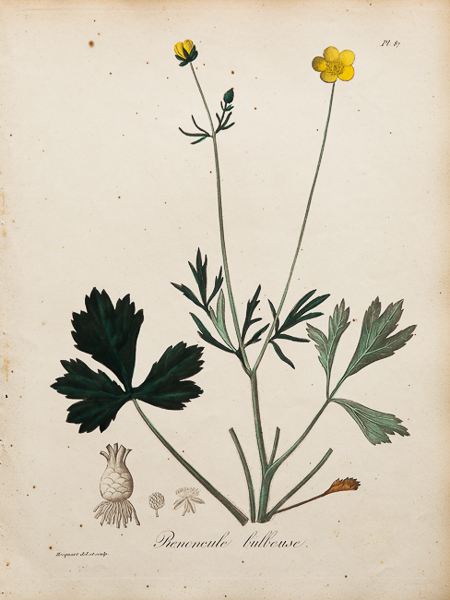 |
| REF: P970 Renoncule langue Greater Spearwort (Ranunculus lingua) Ranunculus lingua, the greater spearwort, great spearwort, tongue-leaved crowfoot, or water buttercup, is a plant species in the family Ranunculaceae native to temperate areas of Europe, Siberia and through to the western Himalaya. £80.00 + VAT |
REF: P971 Renoncule bulbeuse Ranunculus bulbosus, commonly known as St. Anthony's turnip or bulbous buttercup, is a perennial member of the buttercup family. It has attractive yellow flowers, and deeply divided, three-lobed long-petioled basal leaves. Bulbous buttercup is known to form tufts. £70.00 + VAT |
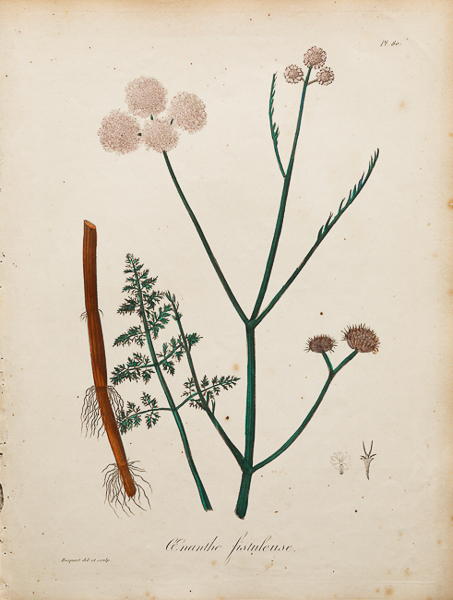 |
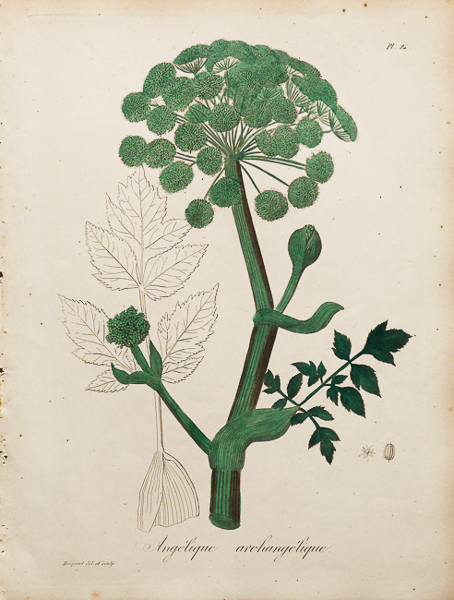 |
| REF: P973 l'Enanthe fistuleuse SOLD |
REF: P974 Angélique archangélique Angelica archangelica, commonly known as garden angelica, wild celery, and Norwegian angelica, is a biennial plant from the family Apiaceae, a subspecies of which is cultivated for its sweetly scented edible stems and roots. SOLD |
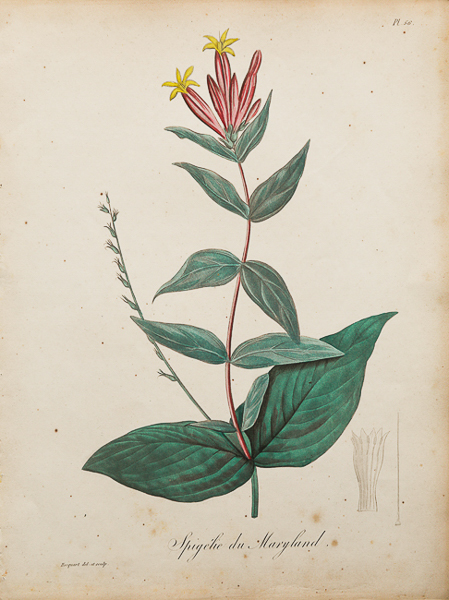 |
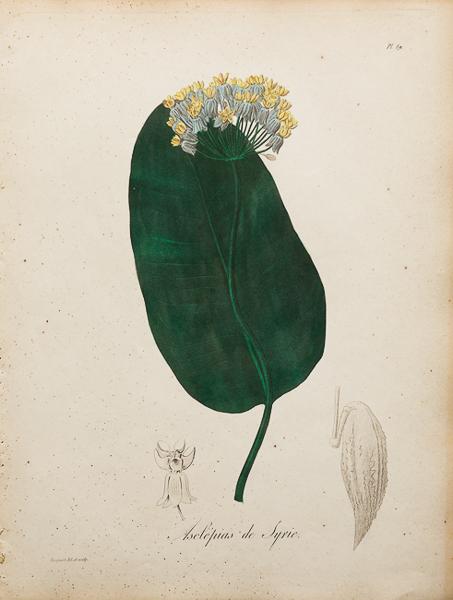 |
| REF: P975 Spigélie du Maryland Maryland Spigelia SOLD |
REF: P976 Asclépias de Syrie Asclepias syriaca, commonly called common milkweed, butterfly flower, silkweed, silky swallow-wort, and Virginia silkweed, is a species of flowering plant. It is in the genus Asclepias, the milkweeds. £80.00 + VAT |
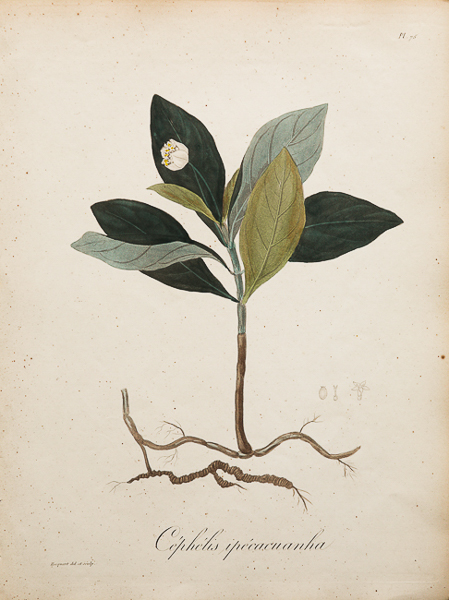 |
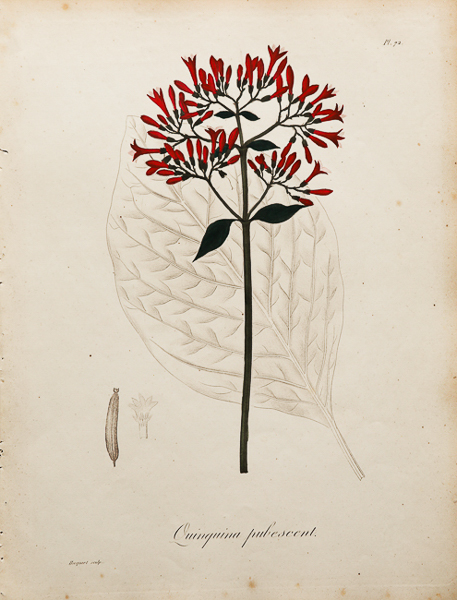 |
| REF: P977 Céphélis ipécacuanha SOLD |
REF: P978 Quinquina pubescent £90.00 + VAT |
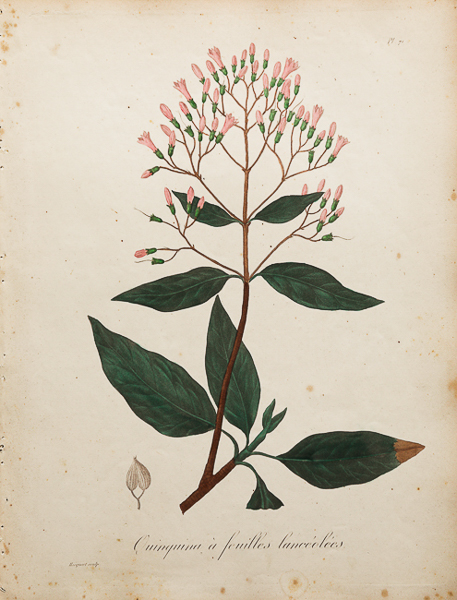 |
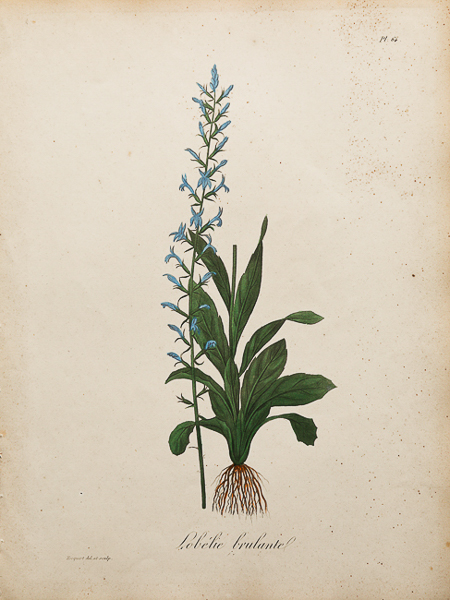 |
| REF: P979 Quinquina à feuilles lancéolées SOLD |
REF: P980 Lobèlie brulante Lobelia urens has the English name of heath lobelia or acrid lobelia. It has a Lusitanian distribution running from Morocco along the Atlantic Coast to Belgium. It can be found in the islands of south Europe: Madeira, Tercia, Falia, Gibraltar. SOLD |
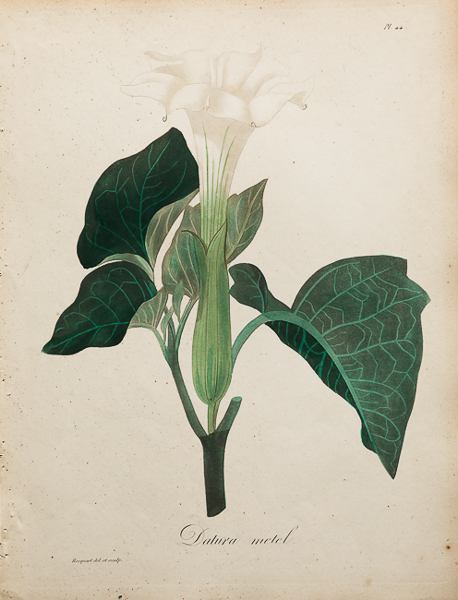 |
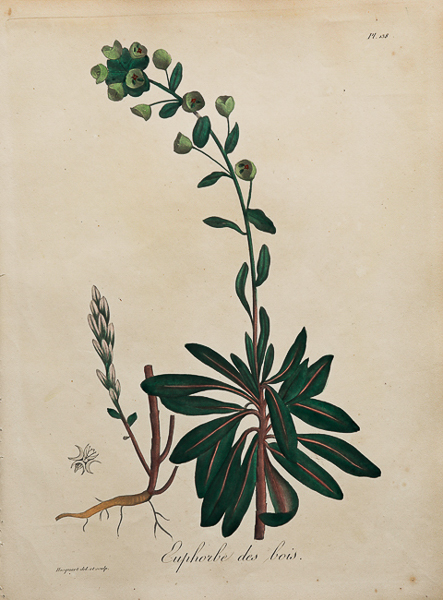 |
| REF: P981 Datura metel Datura metel is a shrub-like annual or perennial herb, commonly known as devil's trumpet and metel. Datura metel grows in the wild in all the warmer parts of the world, such as India and is cultivated worldwide for its chemical and ornamental properties. £65.00 + VAT |
REF: P982 Euphorbe des bois Euphorbia amygdaloides, the wood spurge, is a species of flowering plant in the family Euphorbiaceae, native to woodland locations in Europe, Turkey and the Caucasus. It is a bushy evergreen perennial, growing to a height of 80cm, with dark green slightly hairy leaves about 6 cm long. SOLD |
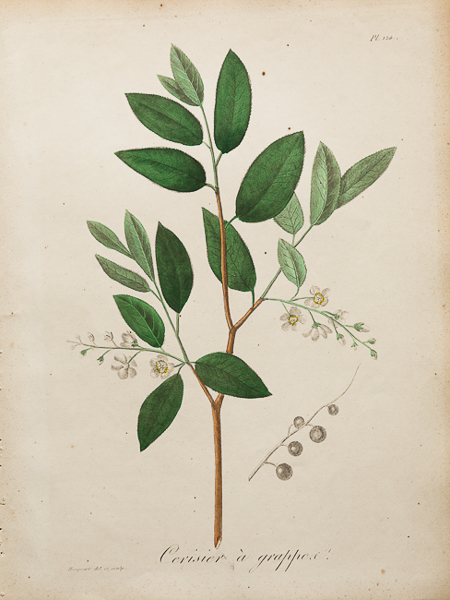 |
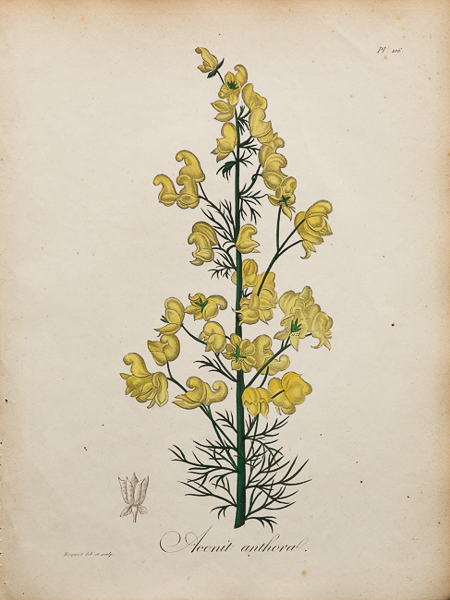 |
| REF: P983 Cerisier à grapper Prunus padus, known as bird cherry, hackberry, hagberry, or Mayday tree, is a flowering plant in the rose family Rosaceae. It is a species of cherry, a deciduous small tree or large shrub up to 16 m tall. It is the type species of the subgenus Padus, which have flowers in racemes. SOLD |
REF: P984 Aconit anthora Aconitum anthora, variously known as anthora, yellow monkshood, or healing wolfsbane, is a yellow flowering plant species of the genus Aconitum in the family Ranunculaceae. Its native range is widespread, but mainly in European mountains, such as the Alps and the Carpathians, and the northern parts of Asia. SOLD |
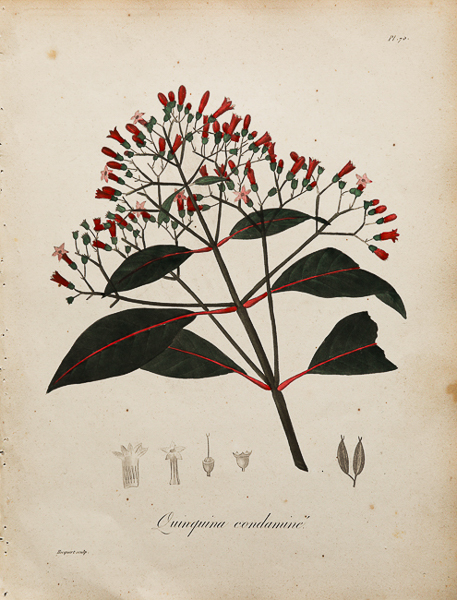 |
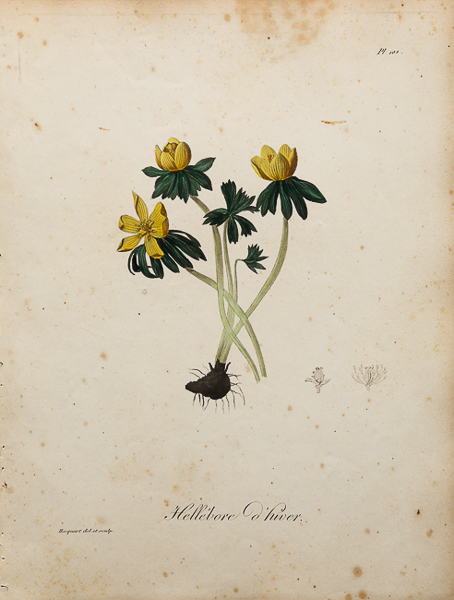 |
| REF: P985 Quinquina condaminé SOLD |
REF: P986 Hellébore d’hiver Commonly known as hellebores, the Eurasian genus Helleborus consists of approximately 20 species of herbaceous or evergreen perennial flowering plants in the family Ranunculaceae, within which it gave its name to the tribe of Helleboreae. SOLD |
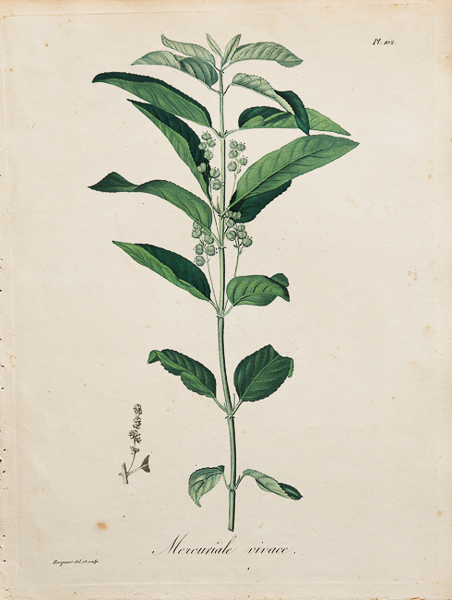 |
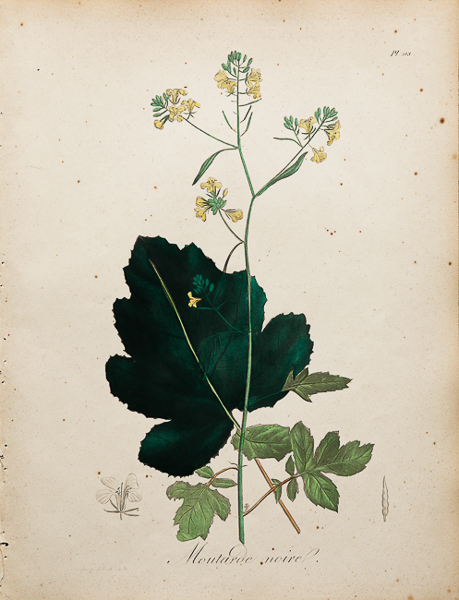 |
| REF: P987 Mercuriale vivace Mercurialis perennis, commonly known as dog's mercury, is a poisonous woodland plant found in much of Europe as well as in Algeria, Iran, Turkey, and the Caucasus, but almost absent from Ireland, Orkney and Shetland. SOLD |
REF: P988 Moutarde noire Brassica nigra, or black mustard, is an annual plant cultivated for its black or dark brown seeds, which are commonly used as a spice. It is native to tropical regions of North Africa, temperate regions of Europe, and parts of Asia. SOLD |
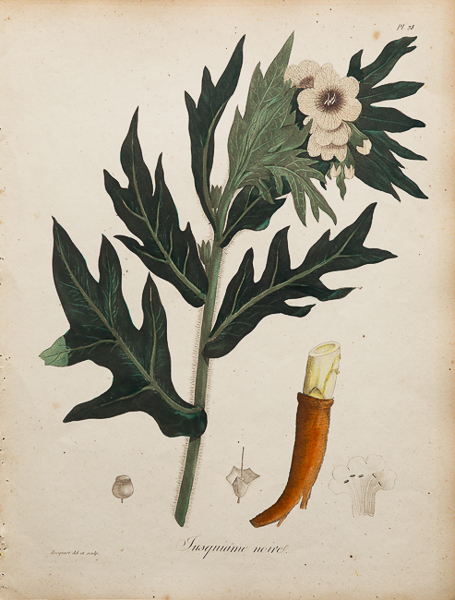 |
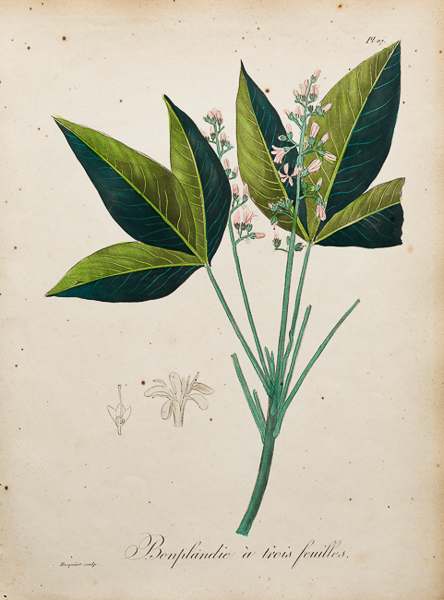 |
| REF: P989 Tusquiame noire Hyoscyamus — known as the henbanes — is a small genus of flowering plants in the nightshade family, Solanaceae. It comprises 11 species, all of which are toxic. It, along with other genera in the same family, is a source of the drug hyoscyamine. £60.00 + VAT |
REF: P990 Bonplandie à trois feuilles Three-leaf bonplandie £70.00 + VAT |
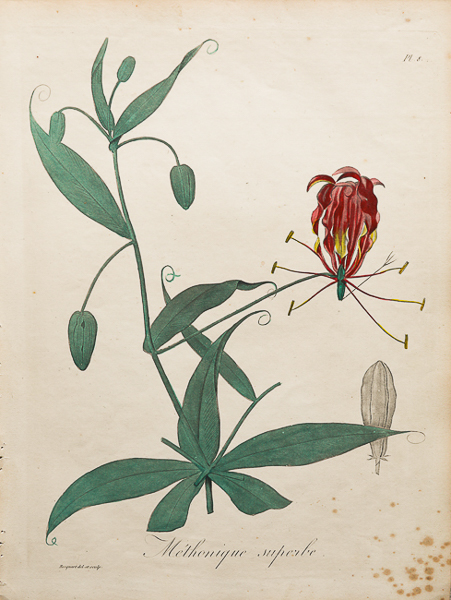 |
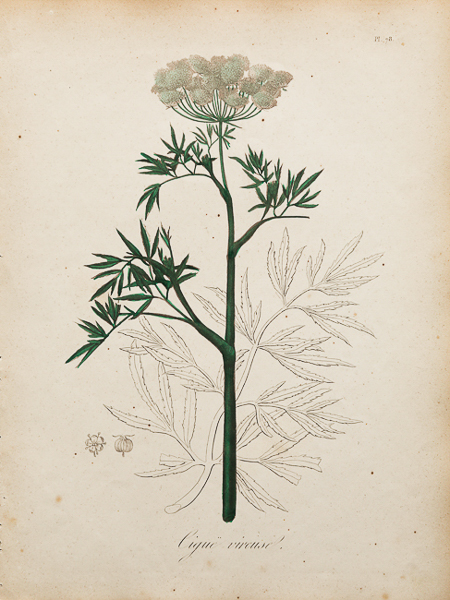 |
| REF: P991 Méthonique superbe Gloriosa Lily, Flamelily £70.00 + VAT |
REF: P992 Liguë vireuse Cicuta virosa, the cowbane or northern water hemlock, is a poisonous species of Cicuta, native to northern and central Europe, northern Asia and northwestern North America. It is a perennial herbaceous plant which grows up to 1–2 m tall. SOLD |
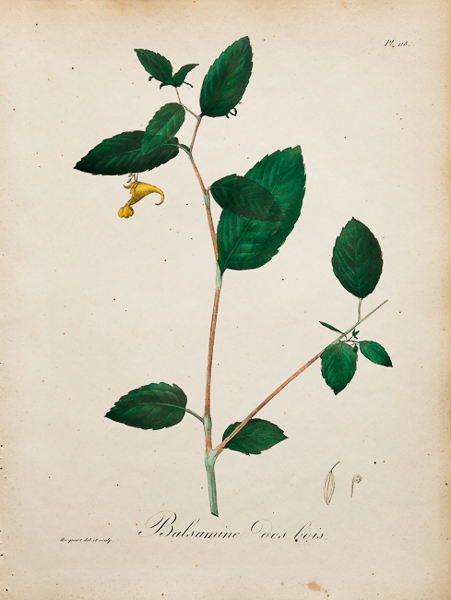 |
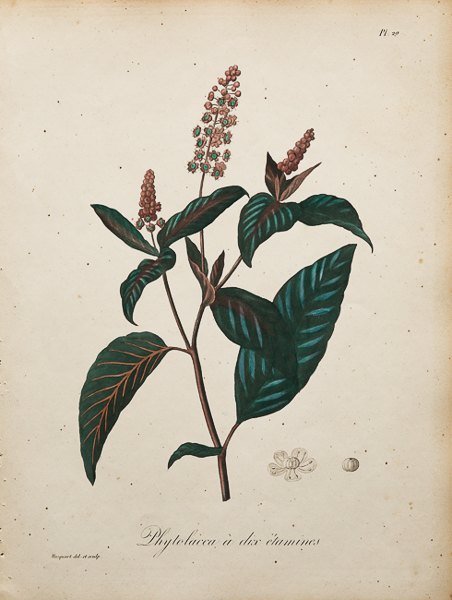 |
| REF: P993 Balsamine des bois Touch-me-not balsam Impatiens noli-tangere is an annual herbaceous plant in the family Balsaminaceae found in damp places in Europe, Asia and North America. The yellow flowers are followed by pods which forcefully explode when ripe, ejecting the seeds for some distance. SOLD |
REF: P994 Phytolacca à dix étamines Phytolacca with ten stamens SOLD |
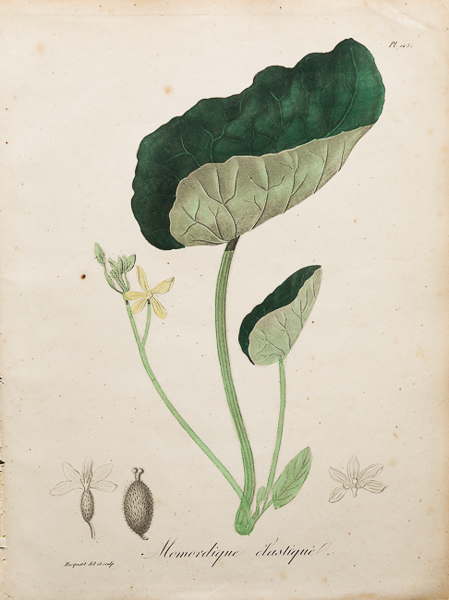 |
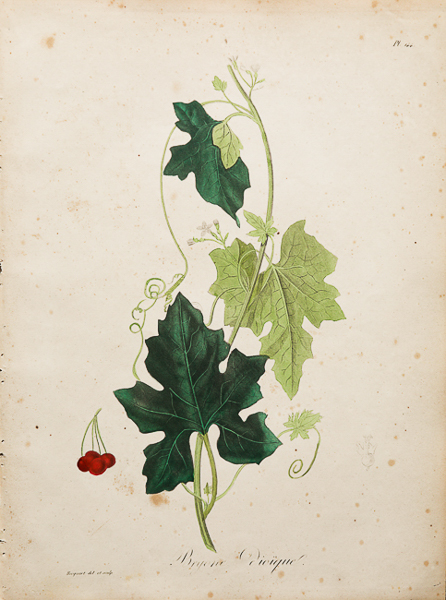 |
| REF: P995 Momordique élastique £65.00 + VAT |
REF: P996 Bryone dioïquel £70.00 + VAT |
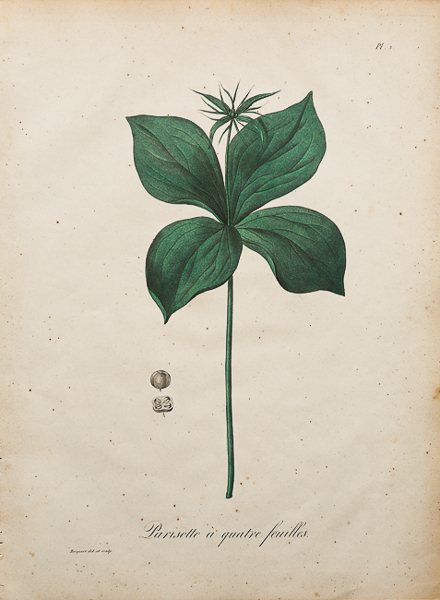 |
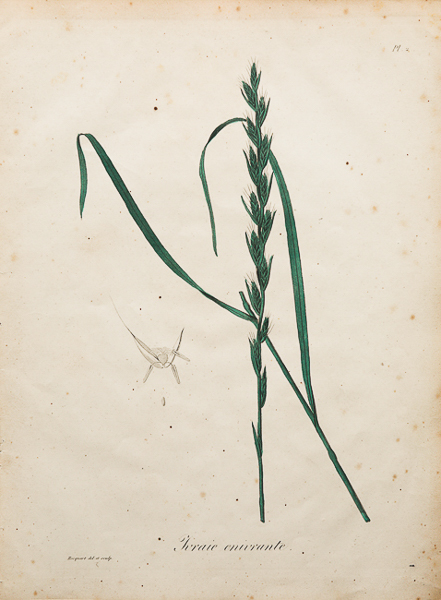 |
| REF: P997 Parisette a quatre feuilles Paris quadrifolia, the herb-paris or true lover's knot, is a species of flowering plant in the family Melanthiaceae. It occurs in temperate and cool areas throughout Eurasia, from Spain to Yakutia, and from Iceland to Mongolia. SOLD |
REF: P998 Ivraie enivrante Lolium temulentum, typically known as darnel, poison darnel, darnel ryegrass or cockle, is an annual plant of the genus Lolium within the family Poaceae. The plant stem can grow up to one meter tall, with inflorescence in the ears and purple grain. £60.00 + VAT |
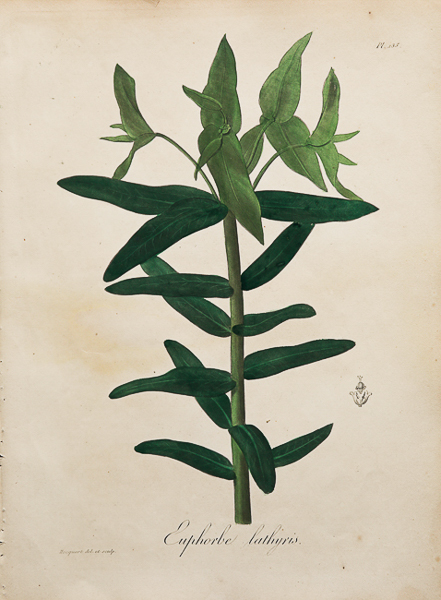 |
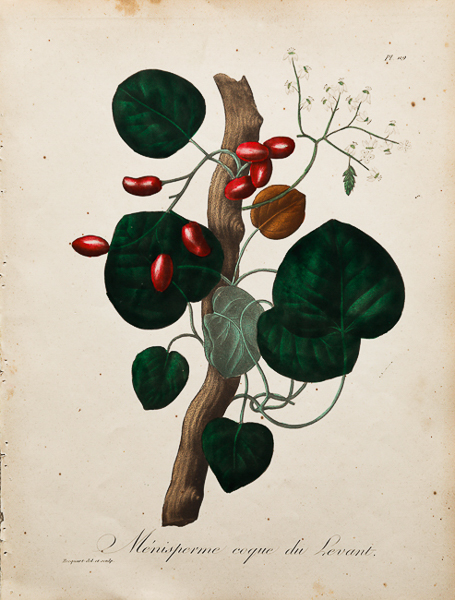 |
| REF: P999 Euphorbe lathyris Euphorbia lathyris, the caper spurge or paper spurge, is a species of spurge native to southern Europe, northwest Africa, and eastward through southwest Asia to western China. Other names occasionally used include gopher spurge, gopher plant or mole plant. £60.00 + VAT |
REF: P1000 Ménisperme coque du Levant £90.00 + VAT |
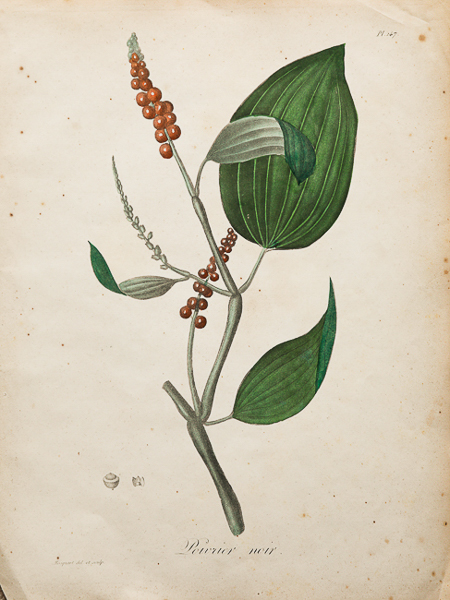 |
|
| REF: P1001 Poivrier noir black pepper £65.00 + VAT |
|
© ALL RIGHTS RESERVED 1999-2025

